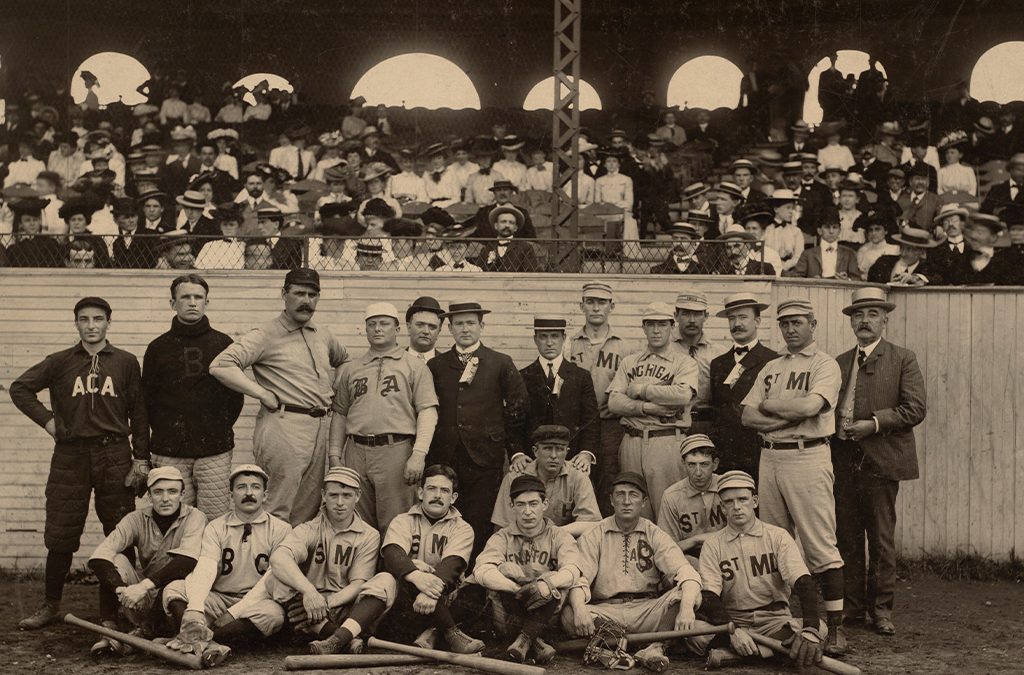
Play ball! Baseball rules, customs looked very different a century ago
Photo by Boston Public Library on Unsplash
July 2022
Everything Old
Play ball! Baseball rules, customs looked very different a century ago
by Corbin Crable
Play Ball! Baseball Rules
Fan or not, there’s always something to enjoy, when watching a summer baseball game.
I’ve never been a sports fan, but I still made some wonderful memories in my childhood, going to summer baseball games played by our beloved Kansas City Royals. Our entire neighborhood would rent a bus and drive out to the stadium on a warm July evening, where I didn’t know much about what was going on there on the field, but nevertheless, I enjoyed the food, the cheers of the crowd, and the people watching. Even now, I do my best to make it to at least one Royals game each summer.
Baseball fans
Longtime baseball fans are well aware of how much the game has evolved since the 19th century, not just in the rules of the game, but in the culture and conduct surrounding it, too. Daniel “Doc” Adams, considered one of the founding fathers of the sport, wrote “The Laws of Base Ball” in 1857, meticulously outlining the game’s rules (New Jersey’s Knickerbocker Base Ball Club developed the game’s rules in 1845); Adams himself invented the position of short stop, and he was the game’s very first to play in that position.
Adams’ book
According to Adams’ book, many of the standards we observe today were listed. Among them – Adams established that each game be played in nine innings and that the bases must be set 90 feet apart from one another.
Much like historical re-enactors, there exists a number of baseball teams that adhere to the rules, uniforms and conduct of certain eras, such as the Mountain Athletic Club, which, according to the club’s website, is “fashioned after the original team established in Griffin Corners, New York, in 1895.” MAC is a member of the Vintage Base Ball Association, which welcomes vintage teams from around the country to gather at its annual convention. Who knew so many vintage baseball enthusiasts exist? The subculture is a surprisingly large one, to be sure.
Included in these teams’ games are a great attempt to not only play by the rules of 19th-century baseball, but also to stick with the look, too. Uniforms tended to be heavier, with sleeves and full collars. It’s certainly hard to believe that athletes played while wearing uniforms that could be so uncomfortable and cumbersome, but then again, that’s merely the opinion of someone living in the present day, accustomed to the look of our modern-day uniforms.
Louisville Slugger
Of course, when it comes to baseball bats, the Louisville Slugger remains the gold standard, used throughout the game since the 1800s. The brand made the news just a few years ago when a Virginia woman found an original J.P. Hillerich & Sons Louisville Slugger hidden in a closet in her home. The bat, manufactured in the 1890s, since there are relatively few late-19th century specimens in good condition, has been estimated to be worth between $5,000 and $10,000, according to a July 18, 2018, article from Forbes.
If you can’t find a vintage baseball team playing in your neck of the woods, an affordable trip to the Louisville Slugger Museum and Factory in Louisville, KY, would make a fine summer road trip for you and your family.
Whether you choose a vintage game or a contemporary matchup between two pro or Minor League teams, you’re sure to appreciate the fun (and even history) inherent in America’s favorite pastime.





